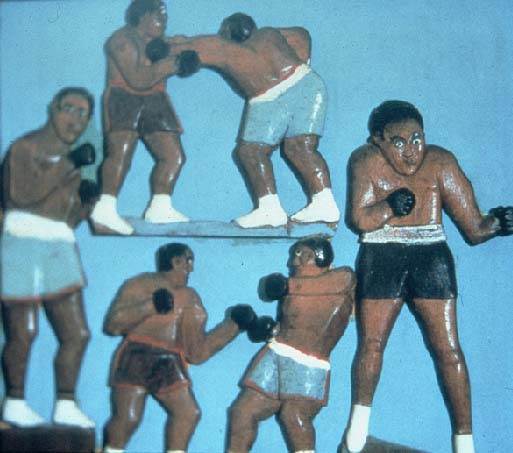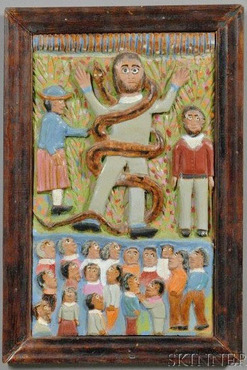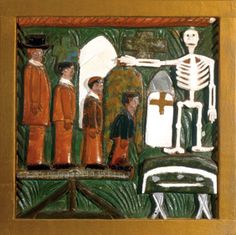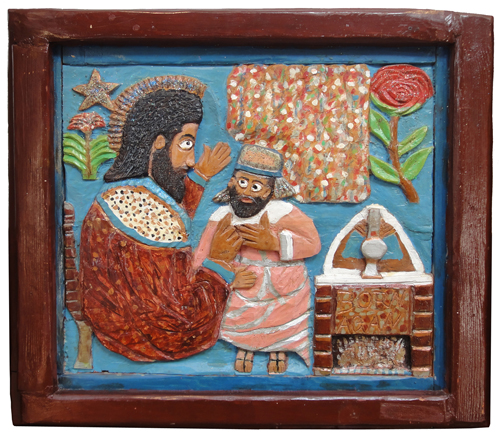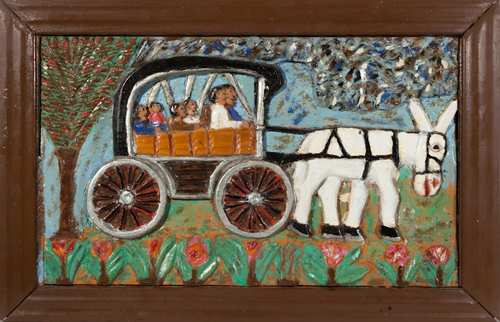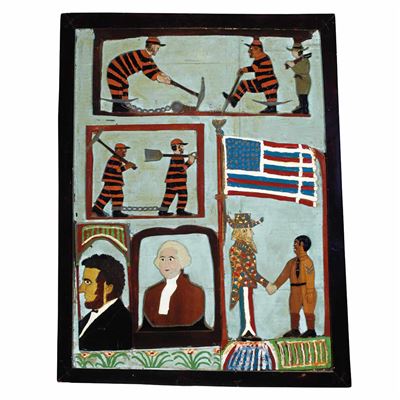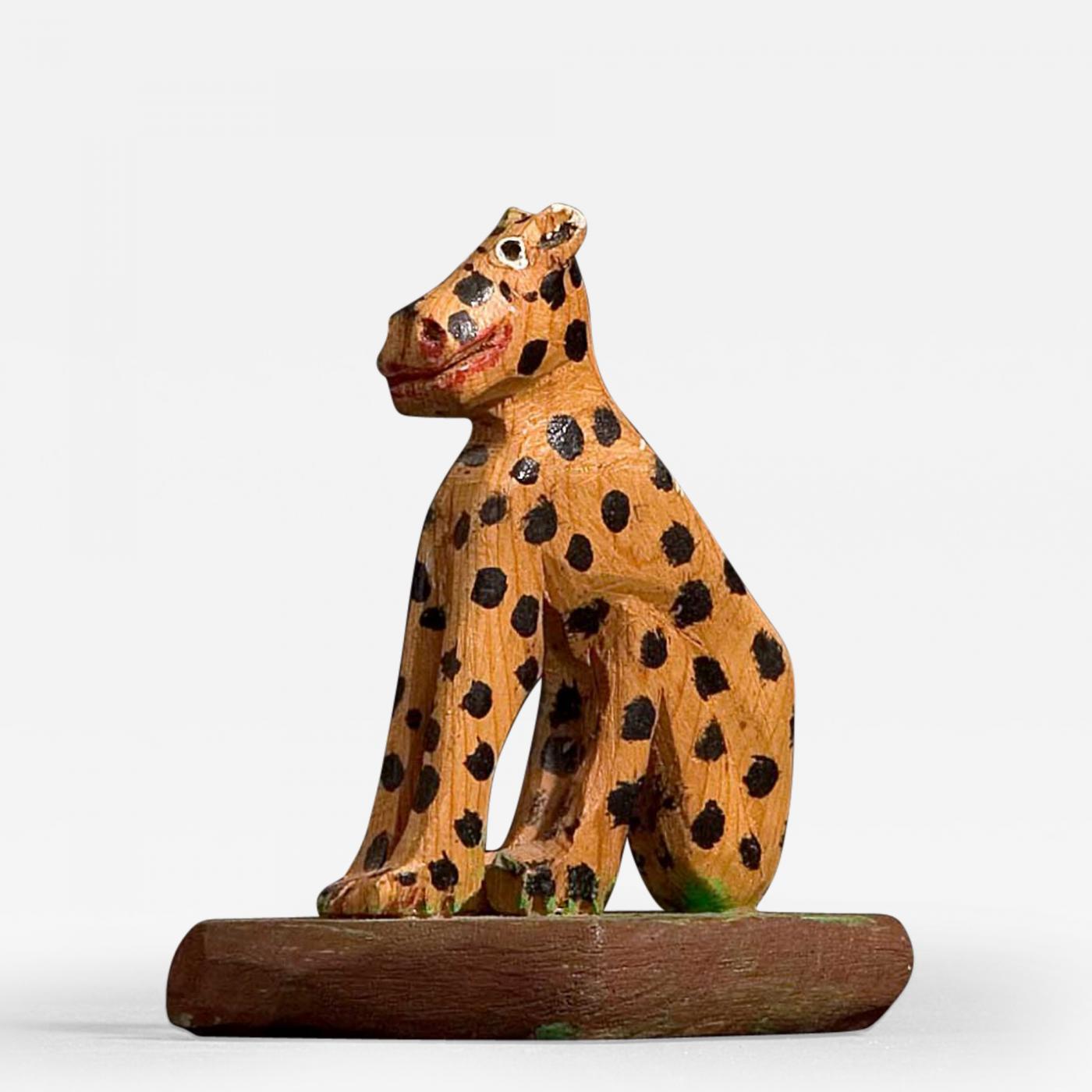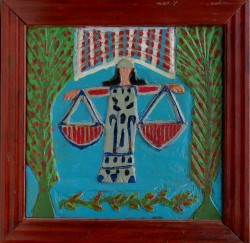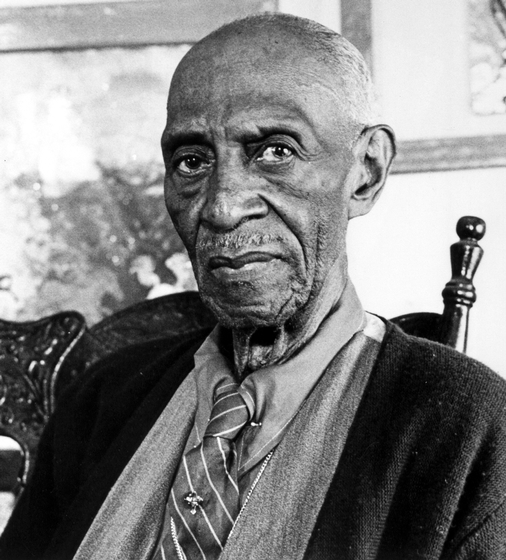Elijah Pierce, American, 1892-1984
Elijah Escapes the Mob • Woodcarving
From the Columbus Museum of Art's Exhibit "Elijah Pierce, An American Journey"
According to Elijah Pierce, every day God gives everyone a page in life’s book. “One day the book will be opened and read before your own eyes and you won’t be able to deny any of it because you wrote it yourself. “
Elijah Pierce had stories to tell. Stories about growing up the son of former slaves. About hoboing in freight trains. About religion. About life on a Mississippi farm and an Ohio barbershop. Stories about the three women he loved and married, and the two he buried.
Folk Art always was more about folk than art. It’s heroes are storytellers and, on that stage, Elijah Pierce stood tall. He was a poor barber who lived to see his carvings displayed at the Museum of Modern Art, New York City’s high cathedral of sophistication. Yes, Elijah Pierce had stories to tell.
He was a Mississippi farm boy whose father gave him a pocket knife and uncle Lewis taught him the woodcarvers art. He didn’t like farming, but loved hanging out at the local barbershop in Baldwyn, Mississippi. Barbering suited him. In short order he earned a preacher’s license, fell in love and married his first wife who died birthing their son.
Soon he left Mississippi with a nickel in one pocket and his pocketknife in the other. Pierce hopped freight trains across America, until reaching Danville, Illinois where he met and married second wife, Cornelia. They eventually settled in her hometown, Columbus, Ohio.
There on Long Street, Elijah Pierce set up a barbershop in a red-walled building with a sagging roof. Between customers, he once carved a small elephant for his wife. Seeing her delight, he carved an entire zoo of exotic animals. Each had a story. “They represented the beasts of Genesis or creatures from the folktales of Pierce’s youth.” Those he didn’t give away to neighborhood kids, he sold at summer fairs.
Soon Pierce began carving scenes from the life of Jesus, one for every year of his life. 33 base relief scenes in all. They became his masterpiece, his Book of Wood.
Pierce kept carving and barbering through his second wife’s death and a third marriage. In thousands of carvings he told the story of America as seen through the eyes of a barber sitting in his shop talking about the issues of the day with friends from the neighborhood.
Finally, around the age of 80, the world stumbled upon Elijah Pierce when an Ohio State University art professor saw his woodcarvings at a local YMCA exhibition. Within a few short years he was an international folk art star.
In a 1979 New York Times Magazine article, Dr. Robert Bishop of the American Museum of Folk Art wrote, “There are 500 woodcarvers working today in the United States who are technically as proficient as Pierce, but none can equal the power of Pierce’s personal vision.”
At the age of 92 Elijah Pierce’s own book was finally read to him. He wrote it and didn’t deny any of it. Or so the story goes.
4 Ways To Sound Smart When Viewing At The Canton Museum Of Art
1.
“Did you know he is a member of the Barbers Hall-Of-Fame in Westerville, Ohio? Did you even know there was a Barbers Hall-Of-Fame?”
2.
“He was also a licensed preacher who frequently carved religious scenes.”
3.
“The son of slaves, his work was cerebrated in the Museum of Modern Art. Now, that’s a journey.”
4.
“His great masterpiece was ‘The Book of Wood’, 33 bas relief scenes from every year of Jesus Christ’s life.”



